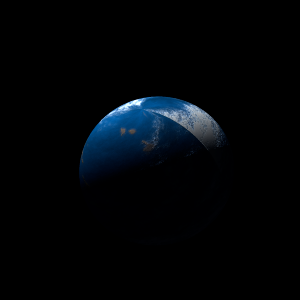|
|
Space Astro
|
Info for exoplanet "Henyoiwo-pya"
| Scientific (actual) data |
|---|
| Name | Kepler-226 c |
| Planet status | Confirmed |
| Radius | 0.203 |
| Orbital period | 5.34956 |
| Semi major axis | 0.058 |
| Discovered | 2014 |
| Updated | 2021-02-05 |
| Tconj | 2455000 |
| Impact parameter | 0.25 |
| Publication | Announced on a website |
| Detection type | Primary Transit |
| Alternate names | 2MASS J19293027+4752515 c, K00749.01, KIC 10601284 c, KOI-749 c, KOI-749.01, WISE J192930.26+475251.5 c |
| Star name | Kepler-226 |
| Right ascension | 292.38° |
| Declination | 47.88° |
| Mag j | 14.114 |
| Mag h | 13.724 |
| Mag k | 13.633 |
| Star distance | 1008.14 |
| Star metallicity | -0.145 |
| Star mass | 0.86 |
| Star radius | 0.8 |
| Star temperature | 5571 |
| Star alternate names | 2MASS J19293027+4752515, KIC 10601284, KOI-749, WISE J192930.26+475251.5 |
| Wikipedia article | Kepler-226 c |
Back
| |
| Fictional info (?) |
|---|
| Suggested name | Henyoiwo-pya |
| Planet type | Hot planet |
| Its orbital period around Kepler-226 of 5.3 earth days is the shortest of all the planets in its solar system.
Having almost no atmosphere to retain heat, it has surface temperatures that vary diurnally more than on any other planet in its solar system, ranging from 100°K (-173°C) at night to 980°K (707°C) during the day across the equatorial regions.
It is radically different from Earth in other respects.
The volume of water ice in the south polar ice cap, if melted, would be sufficient to cover the entire planetary surface to a depth of 16 meters. |
| Atmosphere | Carbonyl sulfide | 61% |
| Nitrogen | 30% |
| Ammonia | 7.2% |
| Ethane | 0.98% |
| Hydrogen chloride | 0.011% |
| Carbon dioxide | 0.0071% |
| Helium | 1.3E-5% |
| Atmospheric pressure | 0.0024 bar |
 |
| No known satellites |
| Google search for Henyoiwo-pya |
|
Website by Joachim Michaelis
|
|
|
|